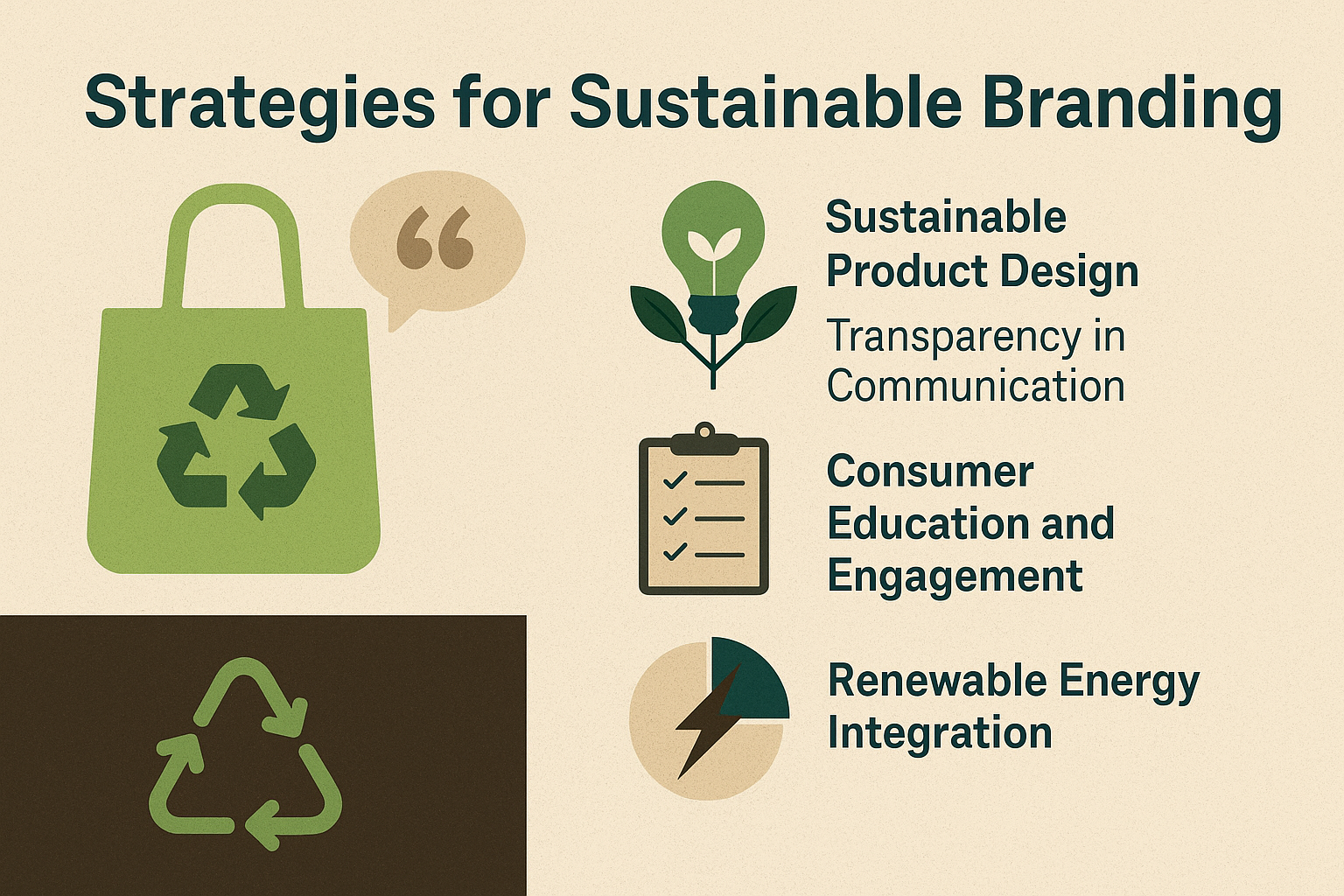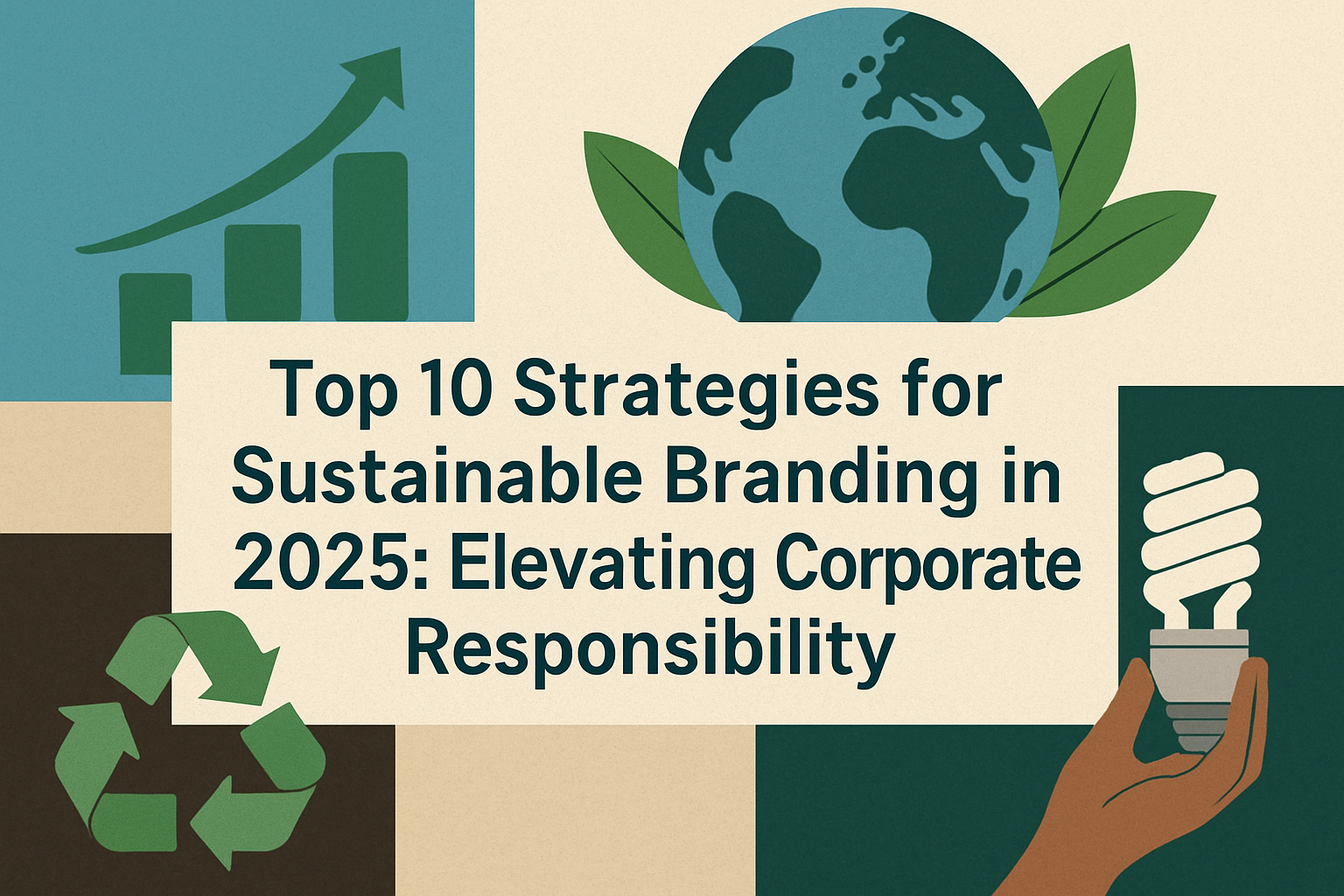Introduction
Sustainable branding continues capturing public attention as the main business topic in 2025. The phrase has evolved beyond being merely trendy. Modern businesses recognize sustainable branding offers more than planet protection (which is essential); it provides opportunities for building trust along with loyalty and achieving market differentiation in the climate-conscious marketplace. Sustainable brands which do not meet consumer values are at risk of missing out to competing brands.
Companies must understand that corporate sustainable responsibility (CSR) has become a necessary business requirement. Sustainable branding receives its strength from this fundamental element. Put sustainability first by transforming it into the fundamental aspect of your business operations and DNA structure. The following list consists of ten practical methods which will help you develop your sustainable branding concept for 2025.

1. Understand Your Brand’s Environmental Impact
Improvement happens only through measurement of performance. Your first step should be to perform an environmental impact audit of your operations. A thorough review of each business segment including supply chain operations and production processes will show your weaknesses. The Global Reporting Initiative (GRI) framework together with collaboration with certified sustainability consultants provide precise insight points.
For example: Leadership brand Patagonia reveals their sustainability advancement through detailed impact reports which they frequently release. The practice of disclosing information develops customer trust among those who prioritize honesty in companies.
2. Align Branding Goals with Sustainability Values
Your brand needs sustainable goals to serve as its central focus. The statement that represents your company must express strong environmental consciousness. The attempt at greenwashing becomes completely visible to customers from any distance. Ikea displays climate positivity missions throughout all its business operations as part of their 2030 sustainability initiative which incorporates circular product development alongside renewable energy projects.
3. Sustainable Product Design
Your offering needs to carry the message of your corporate principles. Whenever possible choose materials that are eco-friendly together with waste-reducing methods and energy-efficient production methods. Adidas implements recycled ocean plastics in its performance sportswear items within its Parley collection. This product combines innovative design with practical features which attract eco-sensitive buyers. Your marketing should focus on these green initiatives because it creates shared advantages between your brand and the environment.
4. Ethical Supply Chain Management
A direct evaluation of brand integrity becomes visible through the supply chain operations. Build relationships with suppliers who share ethical values by establishing fair trade procedures. Sustainability along with corporate sustainable responsibility objectives should govern each step between sourcing and delivery.
EcoVadis functions as a popular sustainability rating platform by delivering complete assessments of supply chain performance. Displays of these ratings expresses your dedicated commitment to sustainable initiatives.
5. Transparency in Communication
Human beings quickly lose their liking for deceitful information. Do not hide information about your sustainable practices when your organization has work to do before reaching perfection. Your company should issue yearly sustainability reports while revealing your organizational progress combined with statements about uncompleted sustainability goals. Take Unilever as an example.
The “Sustainable Living Plan” from Unilever goes beyond displaying their accomplishments by revealing their current operational challenges. Such honest practices help consumers build higher levels of trust toward these companies.
6. Leveraging Technology for Sustainability
The present era calls for technological advantage thus organizations should embrace this reality. Technology stands as the prime catalyst which enables AI to enhance supply chains and IoT to track energy utilization. Tesla along with other brands uses Artificial Intelligence to optimize their electric car production lines while enhancing manufacturing efficiency while reducing materials waste. Your business should consider implementing innovative smart technologies within its current operations.
7. Consumer Education and Engagement
Nonetheless you should demonstrate your sustainability program rather than simply declaring it. Your audience should learn about product impact through educational campaigns. The expansion of your message becomes easier through interactive workshops supported by social media challenges together with the organization of eco-friendly events.
For Example: Lush Cosmetics facilitates “Naked Shops” which displays package-free merchandise to teach customers about plastic waste reduction through sustainable practices.
8. Sustainable Packaging Solutions
Your product meeting the packaging becomes the first thing customers sense in their encounter. Make it count. Transition to package materials which decompose or which can be recycled or which customers can use more than once. The entire Coca-Cola bottle lineup consisted of plant-based materials when the brand released them to markets. An innovative approach of this caliber attracts customer discussions in the market.
9. Partnerships for Sustainability
Collaboration is key. Work together with NGOs and both government entities and other brands dedicated to environmental responsibility to build substantial sustainability impact. H&M develops its circular fashion model together with the Ellen MacArthur Foundation. The collaboration between organizations adds power to their mutual objectives and strengthens their authority in the market.
10. Measurement and Continuous Improvement
After establishing all your implemented strategies how do you proceed? Measure your progress! Monitoring corporate sustainability through important performance measures (KPIs) including carbon emission reduction and waste diversion and energy conservation. You should update your goals through continuous measurements using the established metrics.
The Role of Corporate Sustainable Responsibility
CSR stands as a vital element because of what reason? Sustainable branding stands as the basic essential that ensures its sustainability. By making ethical commitments your brands create products that both offer transactions and establish enduring positive impact. The adoption of CSR initiatives produces two-fold benefits by improving staff motivation and investor attraction and achieving market leadership among environmentally conscious consumers.
Success Stories and Lessons from Failures
Success Stories:
- Patagonia advances sustainable branding by running theirDon’t Buy This Jacket advertising that fosters aware consumer choice.
- Adidas x Parley: Repurposing ocean plastics into high-performance footwear and apparel.
Failures:
- Greenwashing Gone Wrong: H&M received major criticism due to the “Conscious Collection” because a sustainability authenticity review revealed flaws in their environmental claims. The takeaway? Authenticity matters.
Conclusion
Sustainable branding should be considered permanent because it will soon become the industry standard. These 10 strategic measures will enable your brand to flourish and at the same time create meaningful positive impact. Remember, consumers are watching. Customer expectations include genuine commitment combined with complete openness and effective sustainable action.
Begin at any size that suits you if required however initiate the process. Record and adapt based on your progress in addition to setting boundaries as you move forward. Sustainable branding involves more than planet protection because it establishes a better responsible framework which benefits everyone.
Ready to make your mark? Let’s build a sustainable legacy together!

